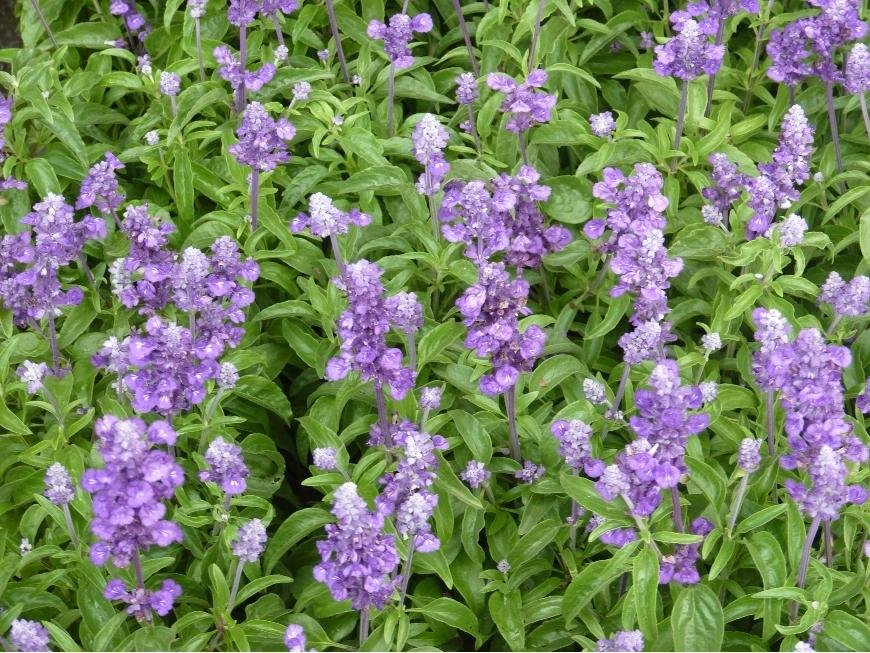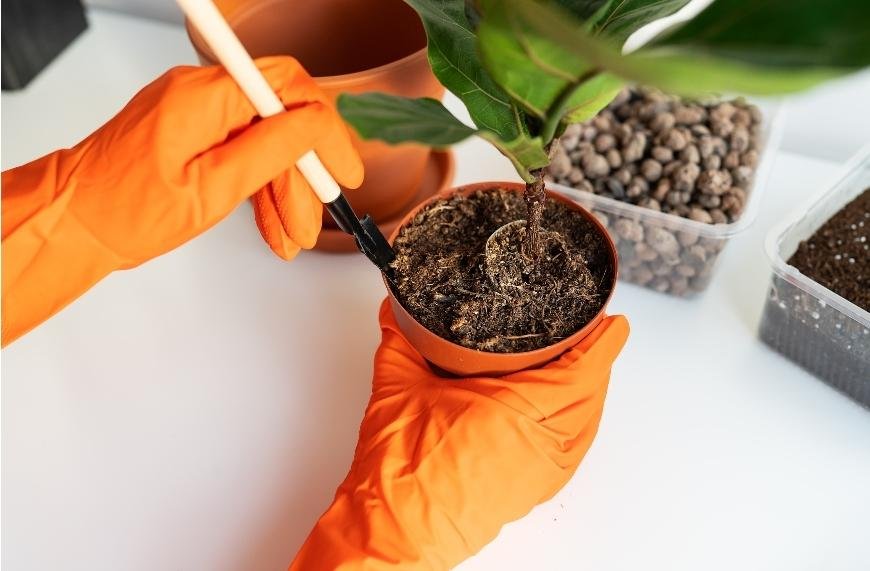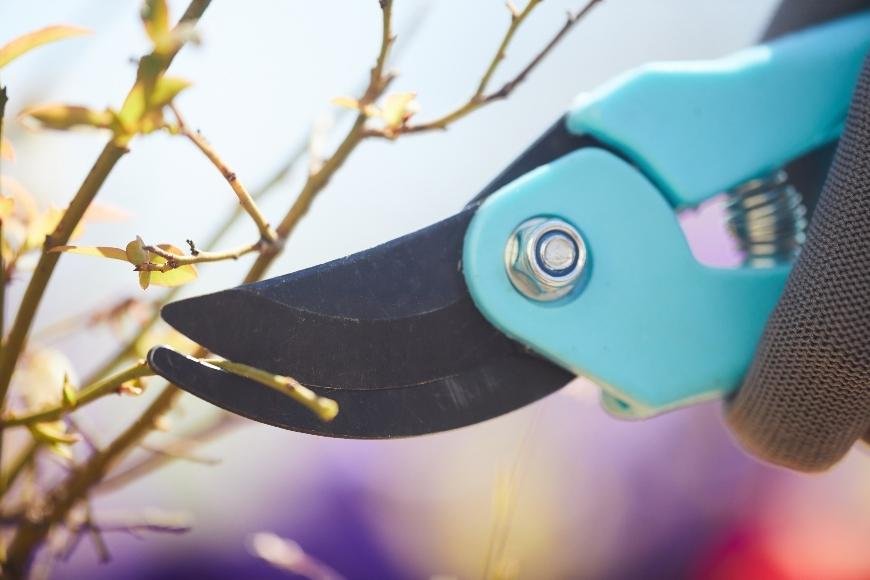How to Grow Salvia Divinorum
Learn how to grow salvia divinorum with this comprehensive guide. From planting and watering to harvesting and storing, we cover it all!

If you're an avid gardener looking to add some unique and interesting plants to your collection, then salvia divinorum might just be the perfect addition. This article will delve into the essentials of cultivating salvia divinorum plants - from sowing to irrigation advice, fertilizer options and illumination prerequisites.
Salvia divinorum is a semi-tropical perennial that can reach impressive heights when provided with the proper environment. We'll discuss how to provide these conditions so that your plant can thrive and reach its full potential. Whether you choose to cultivate your salvia indoors or outdoors, we'll provide the necessary information for successful growth.
You'll learn about different types of fertilizers that work well for salvia divinorum, including organic options like rooting hormone mixtures and general-purpose fertilizers. We'll also cover chemical fertilizer products like rooting powders if those are more your style.
Finally, we'll share some expert tips on how to propagate new salvia plants from cuttings or seeds so that you can continue expanding your garden year after year. So sit back, relax, and get ready to become a salvia divinorum growing pro!
Table of Contents:
- Choosing a Growing Location
- Planting Salvia Divinorum
- Watering and Fertilizing
- Pruning and Training
- Pest Control
- Harvesting Salvia Divinorum
- Storing Salvia Divinorum
- FAQs in Relation to How to Grow Salvia Divinorum
- Conclusion
Choosing a Growing Location
When it comes to growing salvia divinorum, choosing the right location is essential for successful cultivation. Salvia plants require a warm and humid environment with filtered sunlight. A south-facing window or an outdoor area that gets direct sun for at least four hours per day will provide enough light for the plant to thrive. For outdoor cultivation, you may want to consider using a shade cloth as too much direct sunlight can cause the leaves of your salvia plant to burn.
Temperature also plays an important role in determining where you should grow your salvia divinorum plants. For optimal growth, salvia divinorum plants prefer temperatures between 60 and 80°F (15-26°C). If you live in a colder climate, it might be best to opt for indoor cultivation since temperatures outside could dip below this range during winter months and damage your plants.
Humidity is another key factor when deciding where to grow your salvia divinorum plants. These types of plants need high humidity levels—ideally around 50%. If the air in your home isn’t naturally humid enough, consider investing in a small humidifier or misting system specifically designed for houseplants like yours.
When selecting a site for cultivating Salvia Divinorum, one must take into account the amount of sunlight and moisture that the plant necessitates. Now that you have identified a suitable area for your Salvia Divinorum, let's examine the steps to properly establish them.
Planting Salvia Divinorum

Growing Salvia Divinorum is not as difficult as it may seem. The first step in the process is to get some salvia plants or cuttings. Obtaining salvia plants or cuttings can be done either by shopping online or from an exotic garden center, depending on your location. Once you have your plants or cuttings, it’s time to prepare the soil and potting container for planting.
Combine a potting mix with organic matter such as composted leaves and peat moss for optimal drainage and root growth. If possible, add some rooting powder to help encourage root growth when planting salvia divinorum seeds or cuttings.
Opt for a pot of approximately 10-12" in width and 12-14" deep, to provide adequate space for the roots while still keeping them suitably moist. Place drainage holes in the bottom of your chosen container before filling with soil and then water until damp but not soggy before adding any plants or cuttings.
Once planted into their new home, make sure they are placed somewhere with filtered sunlight - direct sunlight can be too intense for these delicate plants. Water regularly during their growing season (usually between April and October) making sure never to overwater them as this can cause root rot which will kill off your precious plant. Fertilize every two weeks using an organic fertilizer such as fish emulsion diluted at half strength throughout their growing season only - no need to fertilize in winter months when they are dormant.
Finally prune back any dead branches/leaves during springtime if needed – just make sure you don’t overdo it – otherwise you risk stunting its growth potential. Pest control isn’t really necessary unless there is an infestation; if this does happen though try using neem oil spray as this has proven effective against most common pests without damaging other beneficial insects in your garden area like bees & butterflies etc…
And there you have it - now sit back and watch nature take its course while enjoying beautiful flowers come summertime and harvesting those lovely leaves come autumn.
Properly planting Salvia Divinorum is essential for the health and growth of your plants. Thus, to guarantee a flourishing future for your Salvia Divinorum plants, it is critical to understand how to water and nourish them adequately.
Watering and Fertilizing
Watering and fertilizing salvia divinorum plants is an important part of ensuring optimal growth and health. When watering, use filtered water or rainwater for best results. Water the plant when the soil is dry to a depth of two inches, allowing it to drain thoroughly before adding more. It’s also important not to overwater as this can cause root rot. Fertilizing your salvia divinorum plant is key during its growing season (April through September), and an organic fertilizer such as fish emulsion or seaweed extract should be used, though a general-purpose fertilizer can suffice if these are unavailable. A good organic fertilizer choice would be fish emulsion or seaweed extract; however, if you don’t have access to these products then a good general-purpose fertilizer will work fine too. For propagating new cuttings from existing plants, you may want to mix up a rooting hormone mixture with water in order to encourage faster root development.
Chemical fertilizers can be used, but it is essential to exercise caution when doing so; too much at once could scorch the fragile roots. Rooting powders are another great option for propagating cuttings since they contain hormones that stimulate rapid root growth without burning delicate roots like chemical fertilizers might do. If grown indoors or outdoors in containers, make sure there is enough drainage holes so excess water can escape easily otherwise the roots could become damaged due to overwatering and poor drainage conditions leading to root rot which can kill your salvia divinorum plants quickly. Additionally, consider using potting soil specifically designed for container gardens instead of regular garden soil since it tends to hold moisture better than other types of soils while still providing plenty of aeration for healthy root growth over time - making it ideal for growing year round.
Proper watering and fertilizing are essential for successful salvia divinorum growth. Pruning and training can help to ensure the plant's long-term health, vigor, and overall appearance.
Pruning and Training

Pruning and training salvia divinorum plants is an important step in promoting healthy growth and maximizing yields. Pruning properly can help optimize growth and enhance the appearance of your salvia divinorum plants.
When it comes to pruning, the most important thing is to make sure you’re removing any dead or dying leaves or stems. This will help promote new growth by allowing more light and air circulation around the plant. When cutting away dead material, use sharp scissors or shears so that you don’t damage any of the healthy parts of the plant.
By employing pruning and training techniques, recreational cannabis growers can optimize the growth of their salvia divinorum plants. To promote healthy development, it is important to snip away any dead or dying leaves and stems with sharp scissors or shears in order to encourage new growth. Additionally, branches should be secured with string or twine so that lateral branching is encouraged - this will create a bushier look which provides better airflow between individual branches as well as increases light energy access from all angles due to improved visibility within an indoor grow space. Moreover, larger fan leaves blocking lower bud sites are kept at bay while still enabling adequate photosynthetically active radiation (PAR) necessary for proper plant development throughout its life cycle stages when using efficient LED lighting sources such as those gaining popularity among recreational cannabis users.
Pruning and training are essential steps to ensure healthy growth of salvia divinorum. To maintain a pest-free environment, the subsequent step is to take action against infestations.
Pest Control
Pest control is an important part of successful salvia divinorum cultivation. Common pests that can affect salvia plants include aphids, mealybugs, spider mites, and whiteflies. These destructive critters are drawn to the juicy foliage of salvia divinorum and can feed on it. To prevent infestation from occurring in the first place, it’s best to start with a clean growing environment by using sterilized potting soil and rooting powder when planting your salvia divinorum seeds or cuttings. Additionally, make sure you use a larger pot than necessary so there is plenty of room for growth and filtered sunlight coming into the area where you have your plants set up.
Finally, remember that prevention is always better than cure; practice good hygiene by regularly inspecting all new seedlings before bringing them home from nurseries or gardening stores so as to not bring home any unwanted visitors.
Pest management is an integral component of cultivating Salvia Divinorum, and it's essential to prevent unwanted bugs from invading your plants. With that said, it's now time to reap the rewards of our pest control efforts by harvesting Salvia Divinorum.
Harvesting Salvia Divinorum
Harvesting Salvia Divinorum is an important part of cultivating the plant. It’s best to harvest when the leaves are at their peak, which is usually between 6 and 8 weeks after planting. For harvesting, be sure to have a pair of scissors or sharp blade prepared.
When it’s time to harvest, cut off the entire stem from the base of each leaf. Be careful not to damage any other stems as this could cause them to rot later on. You should also remove any dead or dying leaves before harvesting in order to ensure healthy growth for future harvests.
After cutting off each stem, use rooting powder on the end that was cut off and place it in a pot filled with potting soil mixed with some sand and composted manure. Make sure that you keep the newly planted salvia divinorum away from direct sunlight until new roots form around 4-6 weeks later. After that point, move your salvia divinorum into a larger pot filled with fresh soil mix so that it can continue growing healthily without overcrowding itself too much within its original container size.
Harvesting Salvia Divinorum necessitates extreme caution and exactitude to guarantee a superior outcome. Now, let's move on to learn about how to store your harvested Salvia Divinorum for optimal freshness and potency.
Storing Salvia Divinorum
Storing Salvia Divinorum correctly is essential to maintaining the potency and freshness of your harvested material. For maximum effectiveness, these guidelines can help you keep your salvia plants in optimal condition:
1. Dry Your Harvested Material:
When harvesting salvia divinorum, make sure to dry it thoroughly before storing it away. This will help preserve its potency over time. Hang the leaves upside down from strings in a well-ventilated room to dry for several days until they become crisp and brittle. Allow them to dry for several days until they become crisp and brittle.
2. Store In An Airtight Container:
Once dried, store your harvested material in an airtight container such as a mason jar or plastic baggie with all the air squeezed out. Make sure there are no gaps or holes where moisture could enter and spoil your stored salvia divinorum over time.
3. Keep Away From Heat & Light Sources:
Storing salvia divinorum away from direct sunlight and other sources of heat will help keep its potency intact longer than if exposed to these elements directly for extended periods of time - so make sure not to place any containers near windows or radiators. Additionally, avoid storing it in humid areas as this could cause mold growth which would ruin the quality of your stored material quickly.
FAQs in Relation to How to Grow Salvia Divinorum
What are the growing requirements for salvia?
Salvia is a perennial herb native to Mexico and Central America. It grows best in full sun, with temperatures between 70-85°F (21-29°C). For best results, the soil should be slightly acidic with a pH of 6.0–7.5 and well-draining to promote healthy growth in full sun at temperatures between 70-85°F (21-29°C). Water regularly during the growing season but avoid overwatering as this can cause root rot or other diseases. Salvia prefers moderate fertilization every two weeks during its active growth period from spring to fall; however, it does not need fertilizer in winter when it goes dormant.
How easy is it to grow salvia?
Growing salvia is relatively easy and can be done with minimal effort. For optimum growth, salvia needs a warm and humid environment with ample sunlight. The plant should be kept moist but not overly wet as this can lead to root rot or other issues. For optimal growth, salvia seeds should be planted in soil with good drainage and kept moist but not sodden. With proper care, salvia plants will begin flowering within two months after planting and produce leaves that contain the active ingredients for up to one year when stored correctly.
Can I grow salvia inside?
No, it is not recommended to grow salvia indoors. Salvia divinorum necessitates particular environmental conditions to flourish and generate useful outcomes, including elevated humidity, ample sun exposure, balmy temperatures and soil that drains well. Growing salvia indoors can be difficult due to the lack of control over these factors. Additionally, growing any type of psychoactive plant may be illegal depending on your location so make sure you are aware of local laws before attempting cultivation.
How long does it take for salvia to grow?
Salvia is a quick-growing plant, able to be harvested after two months of planting. The speed of growth varies depending on the variety and environmental conditions, but generally salvia is ready to harvest within 6-8 weeks. Once mature, salvia should be harvested when the leaves are still green for maximum potency. Proper care during cultivation will ensure that you get the most out of your salvia crop.
Conclusion
Growing salvia divinorum can be a rewarding and enjoyable experience. With the right knowledge, you will have no problem growing this unique plant successfully. Whether you're an experienced grower or just starting out, following these steps for choosing a location to planting, watering and fertilizing, pruning and training as well as pest control should ensure that your salvia divinorum plants thrive. When it comes time to harvest the plants remember to take extra care in preparing them properly before storing so they remain fresh for future use. Good luck with your Salvia Divinorum grow.





































































































































